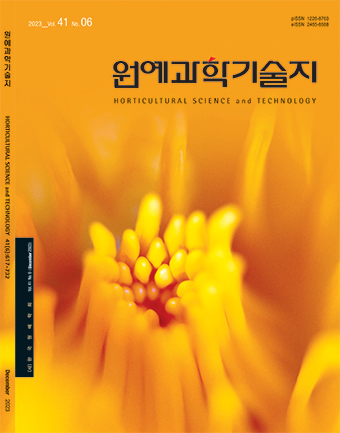- Publisher :KOREAN SOCIETY FOR HORTICULTURAL SCIENCE
- Publisher(Ko) :원예과학기술지
- Journal Title :Horticultural Science and Technology
- Journal Title(Ko) :원예과학기술지
- Volume : 34
- No :6
- Pages :818-829
- Received Date : 2016-07-06
- Revised Date : 2016-08-03
- Accepted Date : 2016-08-08
- DOI :https://doi.org/10.12972/kjhst.20160086
Abstract
References
Information
Journal Informaiton
 Horticultural Science and Technology
Horticultural Science and Technology
Journal Informaiton
Journal Informaiton - close
 Horticultural Science and Technology
Horticultural Science and Technology
- About This Journal
- Editorial Board
- Instructions for Authors
- Publishing Policies
- Academic Journals’ Code of Ethics












